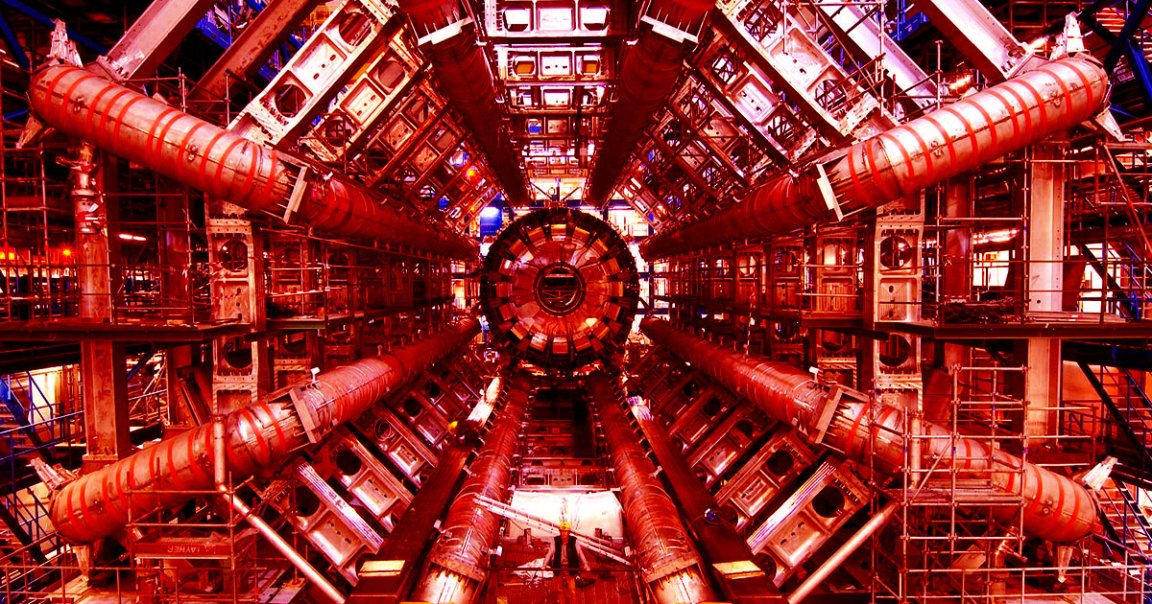
Atom Smasher
The world’s premier particle accelerator, the Large Hadron Collider (LHC), has an impressive circumference of 27 miles (43 kilometers).
But its potential successor, the Future Circular Collider (FCC), described in a new study by the European Organization for Nuclear Research (CERN), would dwarf it — both physically, with a circumference of 62 miles (100 kilometers), and in terms of raw power, with 10 times the atom-smashing power.
“It shows the community the principles and feasibility of the post-LHC Future Circular Collider,” CERN accelerator physicist and study leader Michael Benedikt told Gizmodo. “It shows that there is a credible, coherent physical scenario for implementing a larger-scale project that could seamlessly continue high-energy physics.”
FCC Won’t Let Me Be
Like the LHC, the new particle accelerator’s purpose would be to probe the mysteries of exotic particles like the Higgs boson, which CERN scientists using the LHC first observed in 2012 after physicists had speculated about its existence for decades.
The FCC would use powerful rings of magnets to accelerate matter to mind-boggling speeds, then smash them into each other so that scientists could observe the collision. The goal, according to Gizmodo, would be to study poorly understood phenomena such as dark matter.
Lord of the Rings
Not everybody is on board with the idea of building a huge new particle accelerator.
“We have to draw a line somewhere otherwise we end up with a collider that is so large that it goes around the equator,” former U.K. chief scientific advisor David King told the BBC of the plans for the FCC. “And if it doesn’t end there perhaps there will be a request for one that goes to the Moon and back.”
READ MORE: CERN Unveils Design for 62-Mile-Round Atom Smasher More Powerful Than the Large Hadron Collider [Gizmodo]
More on particle accelerators: The Large Hadron Collider Just Shut Down